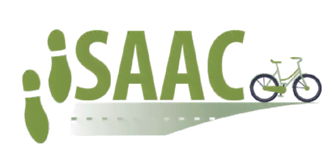Results of the e-survey on users' travel behaviour within the European project ISAAC
What is ISAAC?
ISAAC is a European project supported by SWOV (coordinator), Polis, TOI, Technical University Dresden and VIAS institute: it develops evidence-based recommendations to achieve modal shift in favour of walking and cycling without compromising road safety, social security and comfort. The ISAAC project consists of two elements: a webtool that provides planners with evidence-based information about the impact of transport interventions on modal shift and road safety and a survey report.
In particular, the report is an e-survey conducted on a representative sample of 250 respondents per nine European cities – i.e. Ghent, Liège, Tilburg, Groningen, Trondheim, Bergen, Düsseldorf, Dortmund and Berlin – to understand motivations and barriers behind walking, cycling, and using Personal e-Transporters.
What does the survey tell us on cycling?
On a scale of 1 to 7, where seven stands for major obstacle and one for no obstacle, it turns out that road safety is the biggest obstacle for people to cycle more. In hilly cities, like Liège, it is an even bigger one, whereas in lowland Dutch cities – such as Groningen and Tilburg – it is almost irrelevant if compared to other obstacles like time, physical effort or costs.
In additions, respondents’ answers divided them down in two clusters: those who are pro-cycling (56%) and those who are non-pro-cycling (44%). What is interesting to notice is the profile outlined in the pro-cycling cluster: more often from the Netherlands, the pro-cluster type is a young man with a high level of education who frequently cycles, walks and uses e-transporters and seems open to use sharing mobility systems.
What does the survey tell us on walking?
The biggest obstacle hindering more frequent walking is time. Physical effort, environment (landscape and weather) and traffic safety have an approximately equal weight. The pro-cycling group (which walks significantly more than the other cluster) considers time a significantly more important obstacle for walking more frequently than the other group. However, there are no significant differences between both groups in terms of the importance of physical effort, environment and traffic safety as obstacles for walking more frequently.
Considering the various cities, the survey found out that time is considered a major obstacle in Ghent. In Liège, not differently than in the above-mentioned case for cycling, the environment (and especially the hilly landscape) plays a major role in hindering walking as a travel mode choice. Road safety also results as an important factor in both Ghent and Liège and plays a greater role in these Belgian cities rather than in the cities surveyed in other countries.
What does the survey tell us on using personal e-transporters?
In the cities surveyed there is a group between 2% and 20% who uses a personal e-transporter once or very often. In some cities, this phenomenon is already well-established. For example, almost 5% of Groningen respondents declare to use e-transporters 5 times a week. Meanwhile, Scandinavian cities seem to have little-to no attraction to electric scooters, monowheels and Segways.
The most favourable perceptions, however, are not found in Belgium, but in Germany, especially in Dortmund. However, respondents’ perceptions of PeTs are generally not very favourable (yet) - especially those related to cost and safety received the lowest scores, which result in great hindrance to the use of personal e-transporters as a travel mode.
Conclusions of the report
The findings in the report 'Determinants and barriers of walking, cycling and using Personal eTransporters: a survey in nine European cities' highlight the intrinsically different nature of walking and cycling as transport modes, with different factors and perceived obstacles affecting their usage. As a result, stimulating these modes will require a different approach. While this may seem like a trivial conclusion, it is not uncommon in research as well as policy and practice to treat ‘active modes’ as being a coherent way of transportation with similar features.
However, it is also fair to say that lowering any barrier will have benefits for both cycling and walking.
The key element to promote cycling - but also walking and, why not, using personal e-transporters - is to increase road safety. To do so, it is necessary to work on several elements, such as:
- Infrastructure: safe, separate cycle paths and pedestrian zones;
- Raising awareness among cyclists and other road users for respecting the road code;
- Raising awareness among cyclists and personal e-transporters users for protecting themselves by wearing helmets:
- Promoting alternatives and buildng users' trust (e.g. from traditional bike to e-bikes).
As of walking, more could be done. Making the time for a walking trip shorter, could encourage more individuals in considering walking as a fair alternative travel mode. However, this can only be achieved by creating and improving, among other things, efficient pedestrian crossings and better time-regulation of traffic lights. In conclusion, other important elements for pushing walking as a travel mode are the densification and diversification of cities: indeed, a smart urban planning that provides a cluster of services and activities by walking distance could make the difference for the future of active mobility.
More information
Ppt on the results of the study here
Full report: here
